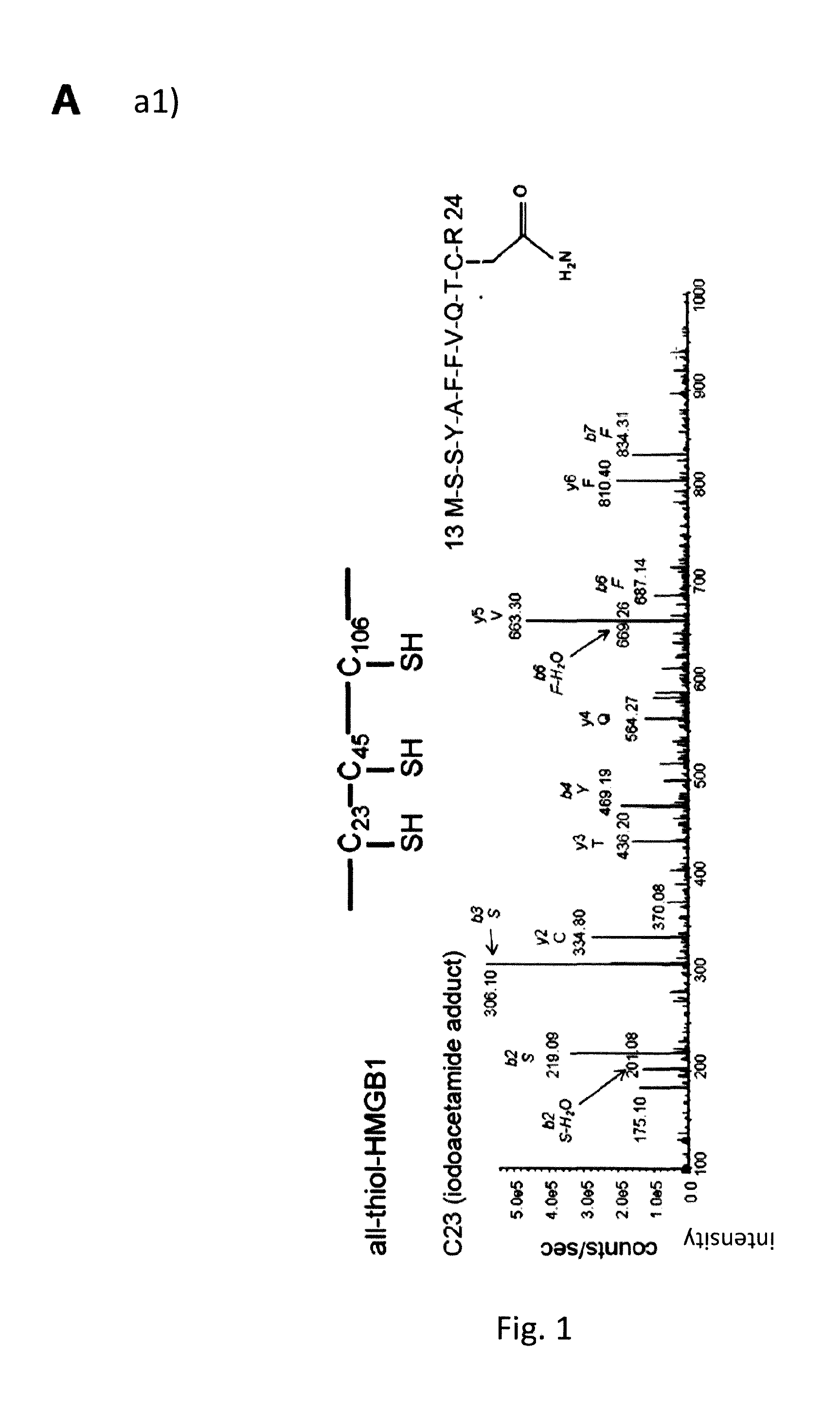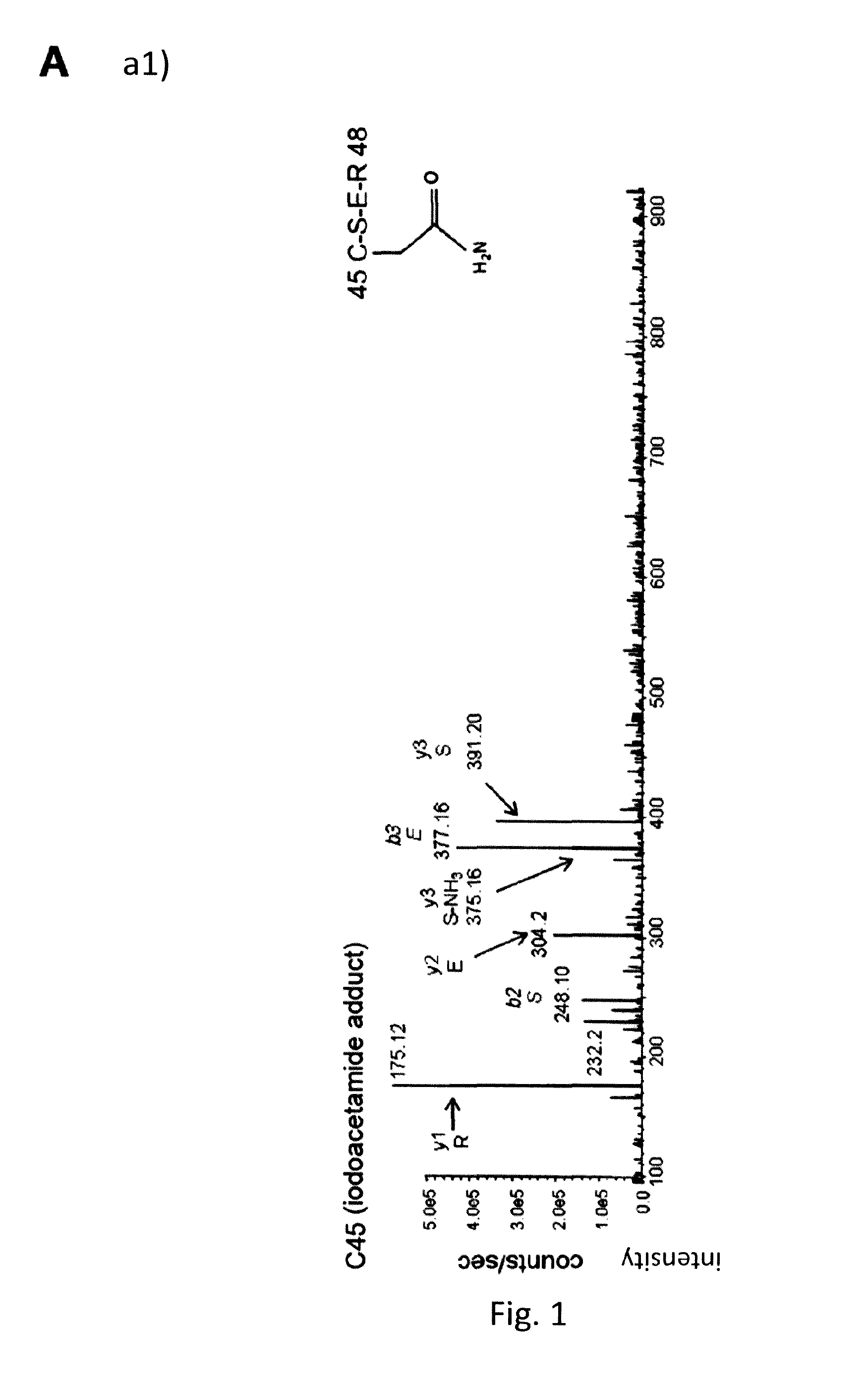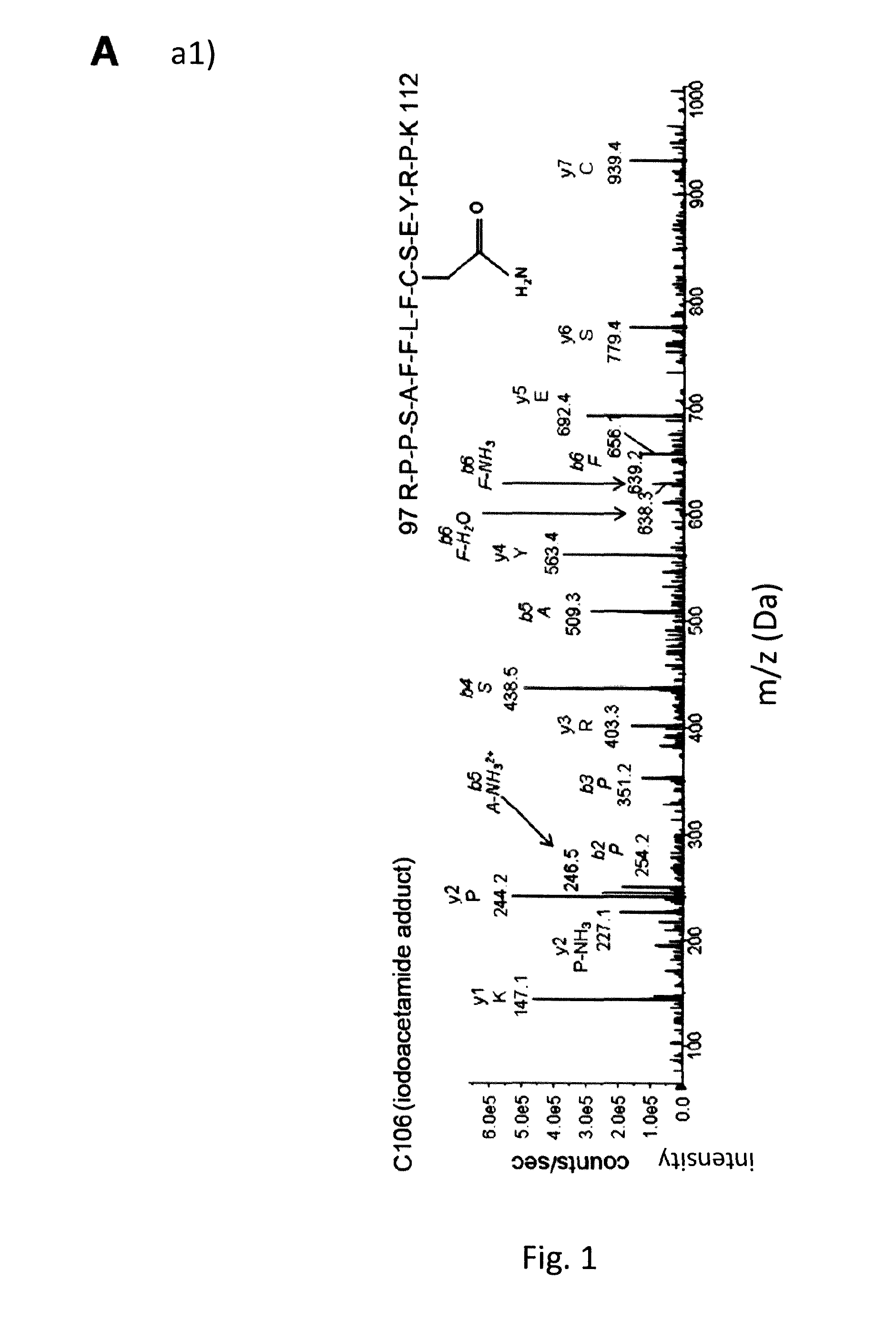Hmgb1 variants and uses thereof
a technology of hmgb1 and variants, which is applied in the field of hmgb1 variants, can solve the problems of non-oxidizable hmgb1 and limit cell death in tissue following damage, and achieve the effects of preventing both cytokine-stimulating activity and eventual inactivation, preserving chemoattractant activity, and favourable properties for recruiting tissue-regenerating macrophages
- Summary
- Abstract
- Description
- Claims
- Application Information
AI Technical Summary
Benefits of technology
Problems solved by technology
Method used
Image
Examples
Embodiment Construction
Materials and Methods
Reagents.
[0085]Human macrophage colony-stimulating-factor (M-CSF) and granulocyte macrophage colony-stimulating-factor (GM-CSF) were purchased from R&D Systems Inc. (Minneapolis, Minn., USA); DMEM, X-Vivo medium, Phosphate Buffered Saline (PBS), glutamine and penicillin / streptomycin from Lonza (Walkersville, Md., USA); Fetal Bovine Serum (FBS) from GIBCO (Karlsruhe, Germany); hydrogen peroxide (30%) from BDH Chemicals Ltd. (Poole, UK). Polyclonal rabbit anti-human HMGB1 antibody was purchased from Abcam (ab18256, Cambridge, U.K.) and the monoclonal mouse anti-HMGB1 DPH1.1 antibody was from HMGBiotech srl. (HM901, Milan, Italy). F(ab′)2 fragments were generated from the DPH1.1 antibody using the Pierce mouse IgG1 Fab and F(ab′)2 micropreparation kit (Thermo Fischer Scientific, Rockford, Ill., USA) following the manufacturer's instructions. Cardiotoxin (C9759) and all other chemicals and materials were purchased from Sigma-Aldrich (St. Louis, Mo., USA). CXCL12 was...
PUM
| Property | Measurement | Unit |
|---|---|---|
| pH | aaaaa | aaaaa |
| pH | aaaaa | aaaaa |
| pH | aaaaa | aaaaa |
Abstract
Description
Claims
Application Information
 Login to View More
Login to View More - R&D
- Intellectual Property
- Life Sciences
- Materials
- Tech Scout
- Unparalleled Data Quality
- Higher Quality Content
- 60% Fewer Hallucinations
Browse by: Latest US Patents, China's latest patents, Technical Efficacy Thesaurus, Application Domain, Technology Topic, Popular Technical Reports.
© 2025 PatSnap. All rights reserved.Legal|Privacy policy|Modern Slavery Act Transparency Statement|Sitemap|About US| Contact US: help@patsnap.com



